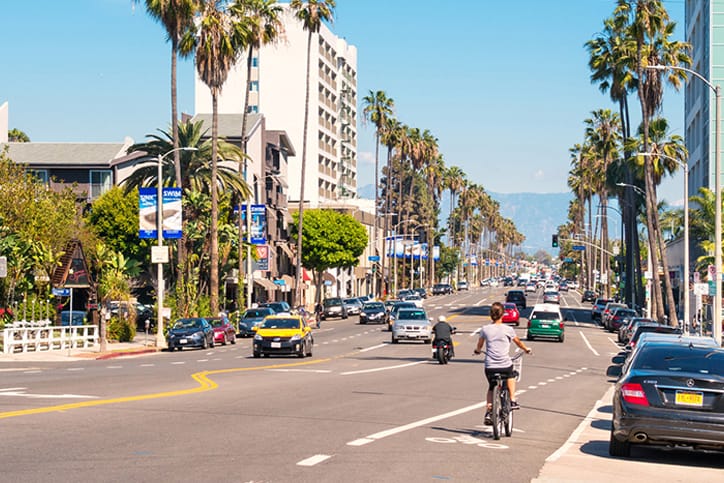With a reputation as one of the worst states to drive in and an overcrowded public transportation system, it’s no wonder that more and more California residents are turning to bicycles for transportation.
But, however seasoned of a bicyclist you may be, you’d be wise to feel uneasy about biking in the big city. Without better laws and better infrastructure, California bike riders will continue to face paramount safety risks. Here are just a few of the ways the current system is failing.
A minimized right to the road
Some publications have gone so far as to call Los Angeles the worst bike city in the country, citing multiple factors that limit a rider’s right to the road, such as:
- Poor road conditions
- Fewer bike lanes
- Disconnected paths, routes and lanes
- A lack of political support
Despite many drivers agreeing that they feel safer when bikers have their own lane, large amounts of city funds are spent in payouts to injured cyclists, rather than on the crumbling infrastructure that contributed to the accident.
Limited parking options
Los Angeles is home to 4 million people. The increasingly congested road traffic that this population presents is one of the reasons so many residents start biking. However, many cyclists soon realize that all of these cars need some place to park.
A lack of parking infrastructure for drivers means that cyclists face the risk of an opening car door parked on the side of the street. With nowhere to go to safely avoid opening doors while still allowing vehicles to pass, riders are trapped with no safety alternative but to prepare for the potential of a crash.
Lacking laws
Initiatives to improve infrastructure for bicyclists in California have been outlined, proposed and approved on at least two occasions, including the 2010 Bicycle Plan and the Vision Zero Action Plan. Together, these were meant to establish more well-connected bike planes, paths and routes with better safety features. However, neither have actually been executed.
Further, one recent case has demonstrated the minimal penalties a driver may face for an accident involving pedestrian fatalities when a mother and daughter were hit and killed by an SUV driver. The college-aged driver did not face a jail sentence for the crime. Examples such as these set the bar for the accountability drivers have for pedestrian safety. At this point in time, the bar could hardly be set lower.


